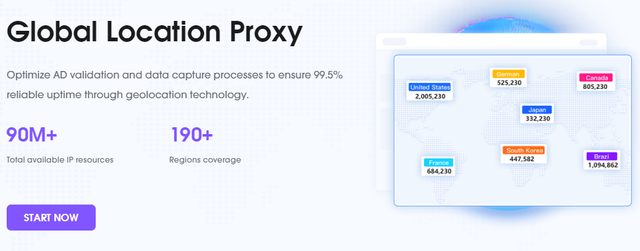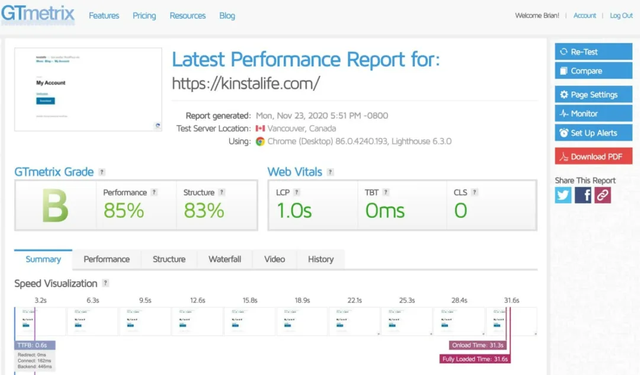Today, localizing website content for global markets is no longer just about simple translation; it also means Rotating digital content to fit local languages by conforming it to cultural norms and linguistic styles, as well as to each region's unique search patterns. Localization helps improve user experience and search engine optimization (SEO) results. Proxies IP allows you to Web Testing your website for worldwide access, get better response latency, and make sure it renders correctly everywhere so that even your local searches can benefit from global rankings.
In this article, I will look at how Proxies can help with content localization testing from both a technical and business perspective, as well as practical applications used by multinational companies.
1. Why is content localization so important?
Content localization is not just about translating text into another language, it's about making website content match the culture, language habits, currency units, time formats and other details of your target market. If website content is not effectively localized, not only will you lose local users, but you may also lower the search engine ranking of your website in the local area.

(1) Enhanced user experience
A truly localized website provides a tailored content experience for users in your target market. This includes everything from language and images to localized product information, payment methods and logistics policies. For example, users in the US will be used to the US dollar, while those in the UK will expect to see the pound sign. For users, familiar content makes them feel like the site was designed specifically for them, which greatly increases user satisfaction and conversion rates.
(2) Improve SEO Ranking
Search engines give priority to displaying content that is relevant to a user's geographic location and language.Search engines such as Google provide customized search results by analyzing a user's geographic location, IP address, language settings, and other factors. If your website content is not optimized for local users, search engines will have a hard time ranking well in that market. For example, a page with English content may perform well in the United States, but would be meaningless in the Japanese market.

(3) Achieving market share growth
Effective content localization not only attracts more local users but also leads to higher conversion rates. If you go for localization for different markets in different countries or regions, it will not only increase customer trust, but also better promote promotions and ultimately increase sales and market share.
2. The role of Proxies in content localization testing
Proxies IP can help simulate users from different countries and regions to visit your website, as an important technical tool that can help organizations to Web Testing their websites and applications in different countries from multiple dimensions to ensure the consistency of content, functionality and user experience. Here are the core roles of Proxies IP in content localization testing:
(1) Simulate the search experience of global users
With Proxies IPs, you can simulate users in different countries and regions around the world and see how keywords perform in those markets. Different geographic locations may result in different search results and keyword rankings. For example, a keyword that ranks #1 in the US may not rank in France. Proxies IP can help you identify these differences and adjust your SEO strategy.
(2) Checking the accuracy of localized content presentation
One of the core aspects of Content Localization Testing is to ensure that the Web displays the correct content based on the user's region. This includes not only language conversion, but also localized advertisements, promotions, currency symbols, logistical information, and more. Proxies IP can simulate users in the target region to ensure that all localized elements are displayed accurately.
(3) Detecting page loading performance in different regions
Differences in network infrastructure in different regions can lead to significant variations in page loading speed and performance. With Proxies IP, you can simulate Porfiles in different countries, test page loading speed and response time, and optimize page performance through data analysis to ensure consistent global user experience.
3. Step-by-step guide to content localization testing via Proxies IPs
To help you conduct content localization testing effectively, here are the exact steps to follow:
(1) Choosing the right Proxies IP service
Before conducting a global localization test, you should first choose a Proxies IP service with wide coverage and stable performance. Proxies are divided into two types: Residential Proxies and Data Center Proxies:
Residential IP: from a real home network with higher anonymity and real user simulation effects, especially suitable for e-commerce platforms, social media or operations that require high anonymity.
Data Center IP: Relatively inexpensive and suitable for large-scale content crawling and testing, but sometimes blocked by certain platforms and not suitable for highly sensitive testing scenarios.
So when using SEO Proxies, it's best to use a Residential Proxies , which is perfect for observing the data situation in different countries and regions.
Here we recommend you to use Proxy4Free Proxies IP, as the industry's leading IP proxy service provider, it not only has unlimited traffic and bandwidth, but also provides high-speed network of more than 30 MB/S. Proxies can be selected from 195 countries/regions around the world. Proxies4Free has provided efficient Proxies services for 20000+ individual users and 100+ enterprise users so far!

Suitable for multinational market research, advertising monitoring, price comparison and other scenarios. At the same time, Proxies offer high anonymity and security, safeguarding your privacy from being violated, and are easy to configure and use, ensuring an ideal choice for an efficient web experience!

Click here to sign up for free Proxies IP!
(2) Conduct keyword ranking tests
Use Proxies IPs to simulate users from different countries visiting Google or other local search engines.
Use SEO tools (e.g. Ahrefs, SEMrush) in combination with Proxies IP to check the ranking performance of keywords in the target country or region.

Compare the differences in search results for each region and adjust your keyword strategy. For example, a keyword may perform well in the United States but not rank for anything in France, indicating the need for keyword localization optimization.
(3) Verification of the accuracy of localized content
Use Proxies IPs to access your website and simulate the user experience in the target country.
Check that the website displays the correct language, currency, date format, and localized content as expected.
Verify that the site offers localized promotions and ads in different countries. For example, European users see different ads than American users.
(4) Testing global page load speed
Page loading speed not only affects user experience, but also directly affects SEO ranking. With Proxies IP, you can Web Testing the loading speed of your website in different regions of the world, find out the slow loading regions and optimize them.
Use Proxies IPs to access pages in different countries and check how fast the page loads with tools such as Google PageSpeed Insights or GTmetrix.

If the analysis is too slow analyze the reasons for slow loading times, such as poor server distribution or content delivery network (CDN) setup issues, to optimize the global access experience.
4. How to optimize global SEO strategies based on data
Once you've completed the Proxies IP test and verified the accuracy of the localized content, you can adjust your global SEO strategy based on this data. Here are a few key steps on how to optimize your SEO based on the test results:
(1) Keyword optimization
After acquiring keyword rankings across the region through Proxies IP, analyze which keywords are not achieving the expected results in the poorly performing regions. Adjust the density and layout of keywords according to the search habits and needs of different markets. For example, certain terms may be searched more frequently in a certain country but not attractive for traffic in other regions.
(2) Content adjustment
Adjust content strategy for different regions based on Proxies IP test results. Ensure that the content is not only compliant with linguistic standards, but also with cultural habits. For example, visual elements, promotional phrases and user interaction design should match the aesthetics and expectations of local users.
(3) Page speed optimization

Global page speed optimization often involves adjustments to server and CDN settings. For countries with slower access speeds, consider ensuring that users have a good experience when accessing the site from anywhere by deploying more server nodes or choosing a more efficient CDN network service.
(4) Combined use of multiple analytical tools
In addition to Proxies IP, you can also combine SEO tools such as Google Analytics, Google Search Console, etc. to deeply analyze user behavior, traffic sources and keyword performance in different markets around the world. Through the combination of multi-dimensional data, you can get a more in-depth optimization plan.
Conclusion
Localizing content for testing is not only an important step in ensuring a good user experience, but it's also key to improving SEO performance.
With Proxies IPs, you can simulate user access from different national devices and regions, ensuring that content, ads, promotions, and page load speeds are delivered globally.
Proxies provide a convenient and efficient solution for global content testing, whether it's testing keyword performance or ensuring the accuracy of localized content for your global SEO strategy.